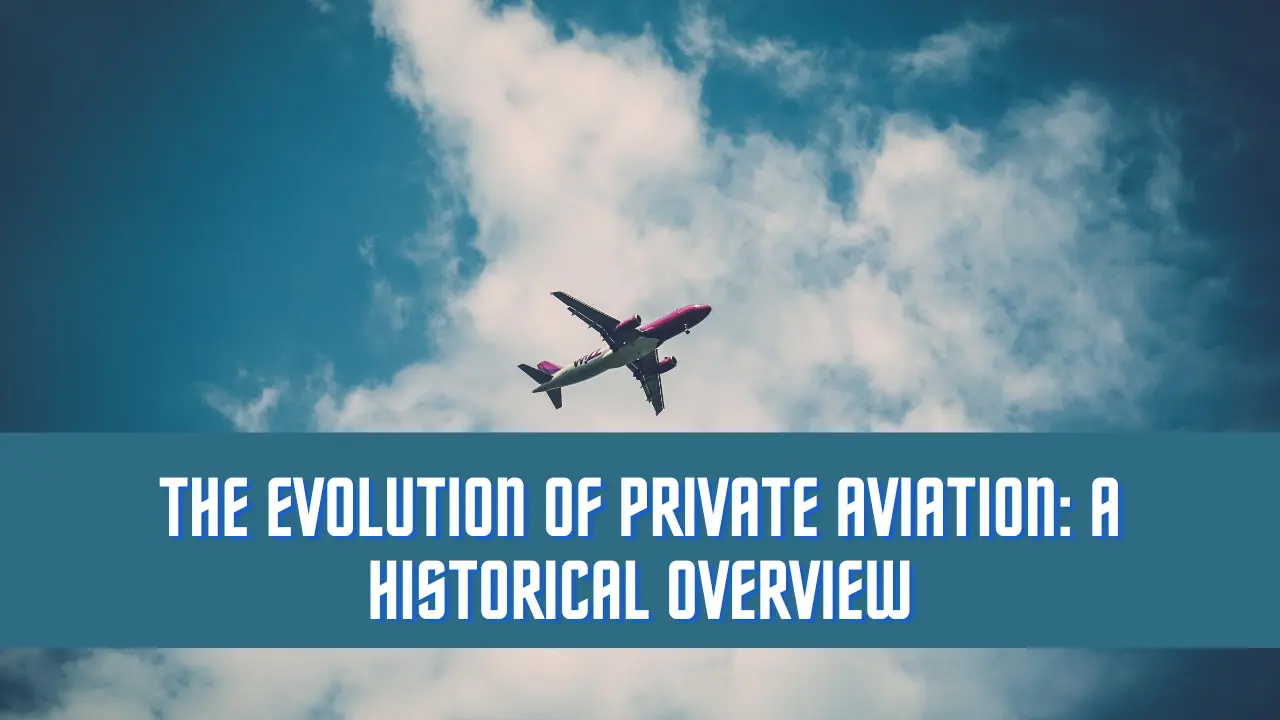Private aviation has experienced significant growth and evolution since its early days. The historical milestones, technological advancements, and shifts in the industry have shaped the modern landscape of private air travel. In this article, we will explore the key events and innovations that have transformed private aviation into the thriving industry it is today.
A Dream Takes Flight: Early Beginnings
The story of private aviation began with mankind’s long-held dream of conquering the skies. As early as 1783, the Montgolfier brothers demonstrated the potential of air travel with their pioneering hot-air balloon flights. This groundbreaking achievement marked the beginning of a new era in aviation history, paving the way for more sophisticated aircraft designs.
The Birth of Powered Flight: The Wright Brothers
In 1903, Orville and Wilbur Wright achieved the first powered, controlled, and sustained airplane flight, revolutionizing aviation forever. The Wright brothers’ invention, known as the Wright Flyer, laid the foundation for modern aircraft and ignited a race to develop more advanced flying machines. This watershed moment in aviation history marked the beginning of private aviation as we know it.
The Roaring Twenties: The Golden Age of Aviation
The 1920s saw rapid advancements in aviation technology and the emergence of the first private planes. Wealthy individuals, particularly in the United States, started buying and flying their own aircraft. This period also witnessed the birth of the commercial aviation industry, which provided a new mode of transportation for business and leisure travelers alike.
The Growth of General Aviation: Post-World War II Boom
After World War II, the private aviation sector experienced unprecedented growth. With the surplus of military aircraft and advancements in technology, private planes became more accessible and affordable. General aviation, which includes all non-commercial and non-military air travel, saw a surge in popularity, especially among entrepreneurs and successful business people.
Jet Setters: The Introduction of Private Jets
The 1960s marked the beginning of the private jet era, with the introduction of the first business jets. The Learjet 23, designed by Bill Lear, was one of the first private jets to enter the market in 1964. It revolutionized private aviation by providing faster, more comfortable, and luxurious travel options for the elite.
Technology Takes Off: Innovations in Private Aviation
Over the years, private aviation has seen numerous technological advancements that have made aircraft safer, faster, and more efficient. Innovations such as composite materials, advanced avionics, and fuel-efficient engines have contributed to the evolution of private air travel. Additionally, the development of satellite-based navigation systems has significantly improved the safety and reliability of private flights.
Fractional Ownership: Making Private Aviation Accessible
In the 1980s, the concept of fractional ownership was introduced, making private air travel more accessible to a larger audience. This innovative business model allows individuals and businesses to own a share of an aircraft, reducing the costs and responsibilities associated with full ownership. Fractional ownership has played a crucial role in the growth and democratization of the private aviation industry.
The Rise of On-Demand Charter Services
As private aviation continued to grow, the demand for flexible, on-demand air travel options also increased. On-demand charter services emerged in the 1990s and 2000s, offering travelers the convenience and luxury of private air travel without the commitment of ownership. These services have further expanded the reach of private aviation, catering to a diverse range of clients and needs.
Sustainability Takes Center Stage: The Greening of Private Aviation
In recent years, the private aviation industry has become increasingly focused on environmental sustainability. With mounting concerns about climate change and the environmental impact of air travel, private aviation companies have been working towards reducing their carbon footprint. Efforts include the development of electric and hybrid aircraft, the adoption of sustainable aviation fuels, and the implementation of carbon offset programs.
The Digital Revolution: Apps and Online Platforms
The digital age has brought about significant changes to the private aviation landscape. Online platforms and mobile apps have made it easier than ever for travelers to book and manage their private flights. These technological innovations have introduced a new level of convenience and accessibility to private air travel, allowing users to book flights with just a few clicks or taps.
The Rise of Supersonic Private Jets
The quest for speed has always been a driving force in the aviation industry. The development of supersonic private jets represents the next frontier in private air travel. Companies like Aerion, Boom Supersonic, and Spike Aerospace are working on cutting-edge aircraft designs that will drastically reduce travel times, making private aviation even more attractive to business and leisure travelers.
The Future of Private Aviation: Urban Air Mobility and Beyond
As the industry continues to evolve, private aviation is poised to play a crucial role in the future of transportation. Urban air mobility, which involves the use of electric vertical takeoff and landing (eVTOL) aircraft for short-distance travel, is an emerging market with significant potential. Private aviation companies are actively investing in eVTOL technology, paving the way for a new era of urban transportation.
A Historical Overview: The Evolution of Private Aviation
From the early days of hot air balloons to the rise of supersonic jets and eVTOL aircraft, the private aviation industry has come a long way. The historical milestones and technological advancements that have shaped the industry have made private air travel more accessible, convenient, and environmentally friendly than ever before. As we look to the future, it is clear that private aviation will continue to innovate and revolutionize the way we travel.
How to Start a Private Jet Business: A Complete Guide
Introduction Starting a private jet business can be a lucrative and exciting venture for aviation enthusiasts. With the growing demand for luxury travel and personalized experiences, the private jet industry is booming. However, it is important to have a strategic plan and a thorough understanding of the market before diving into this competitive field. In…
Can You Smoke on a Private Jet?
Many people dream of flying on a private jet, enjoying the luxurious amenities and personalized service. However, one common question that arises is whether smoking is allowed on a private jet. In this blog post, we will explore the rules and regulations surrounding smoking on private jets. The Legalities Smoking on commercial flights has been…
Bombardier’s Learjet 75 Liberty Aircraft
When it comes to the fate of the Learjet brand, there’s a lingering question: will the company that revived it be the one to say goodbye? Bombardier faced this query when it shelved the Learjet 85 program in 2015 after investing $1.4 billion. Today, only the Learjet 75 remains in production, crafted from the airframe…



